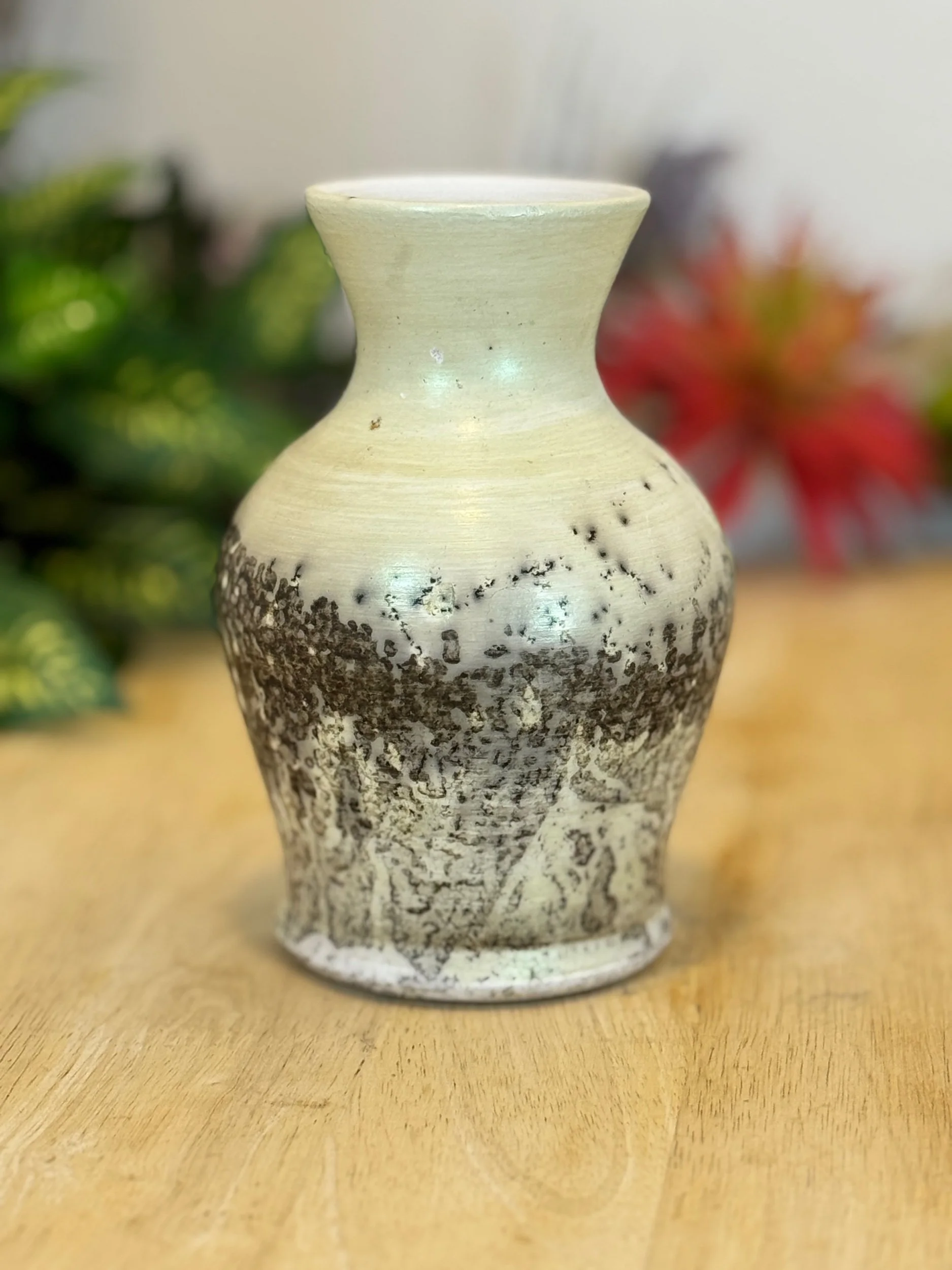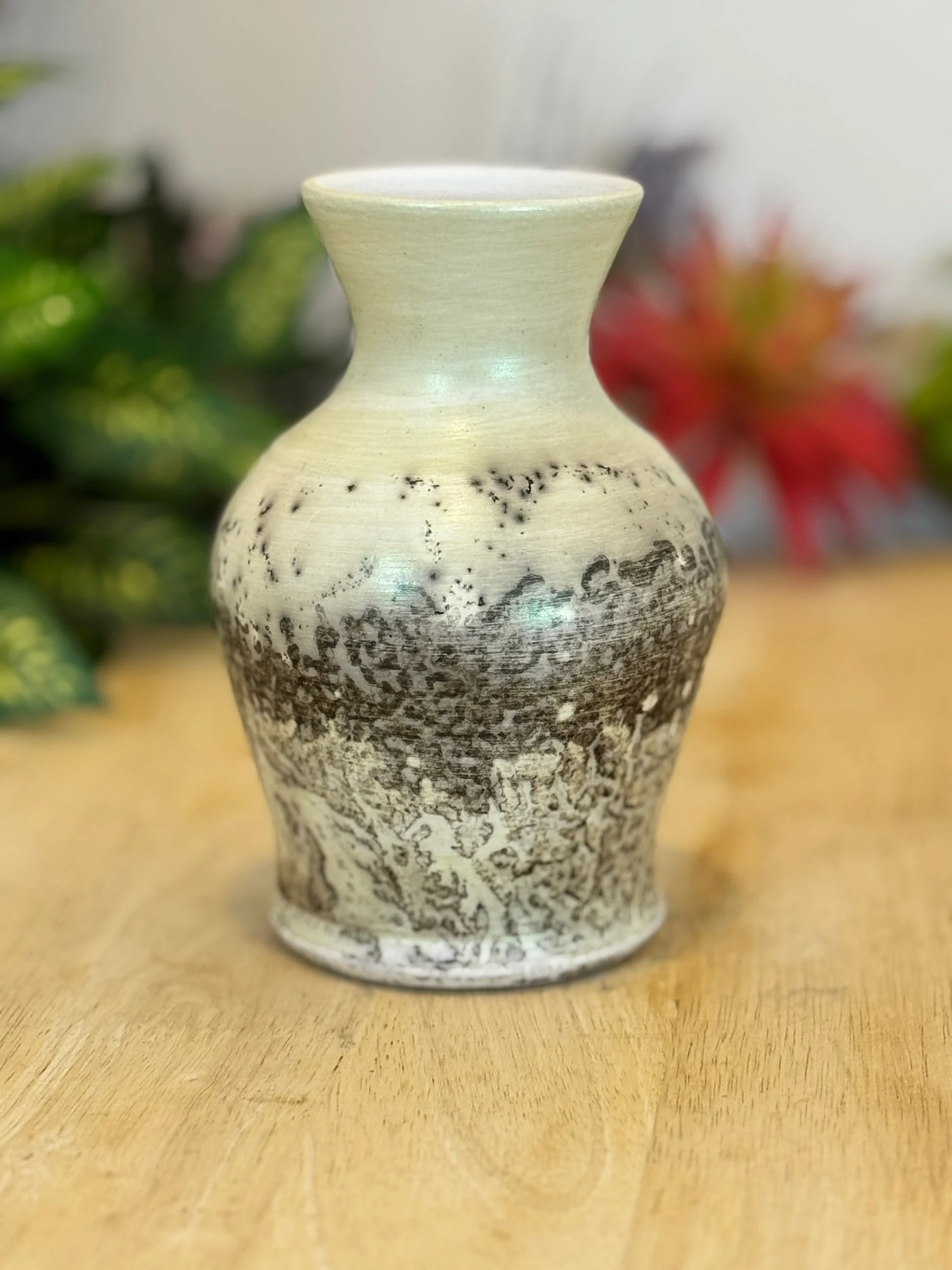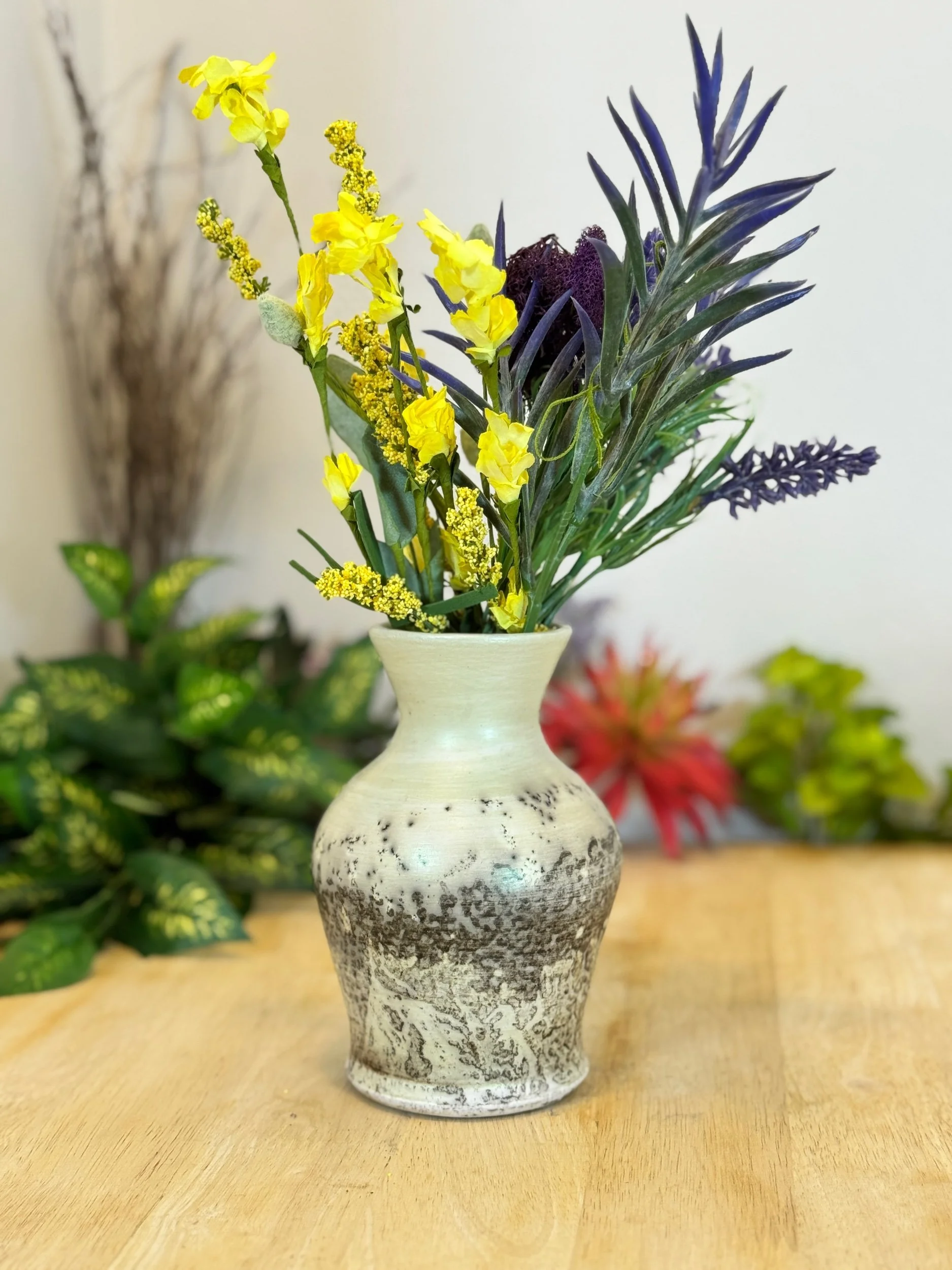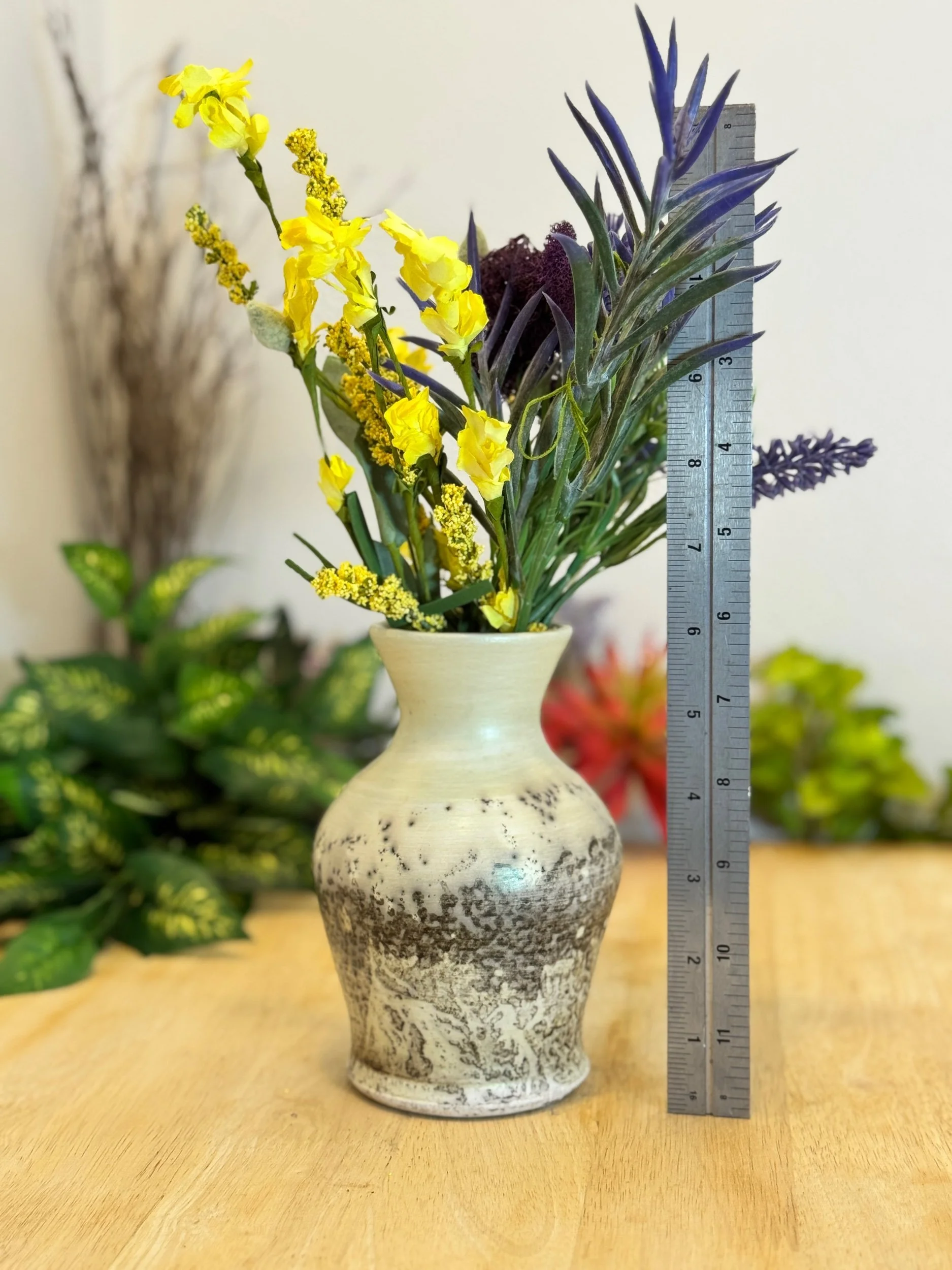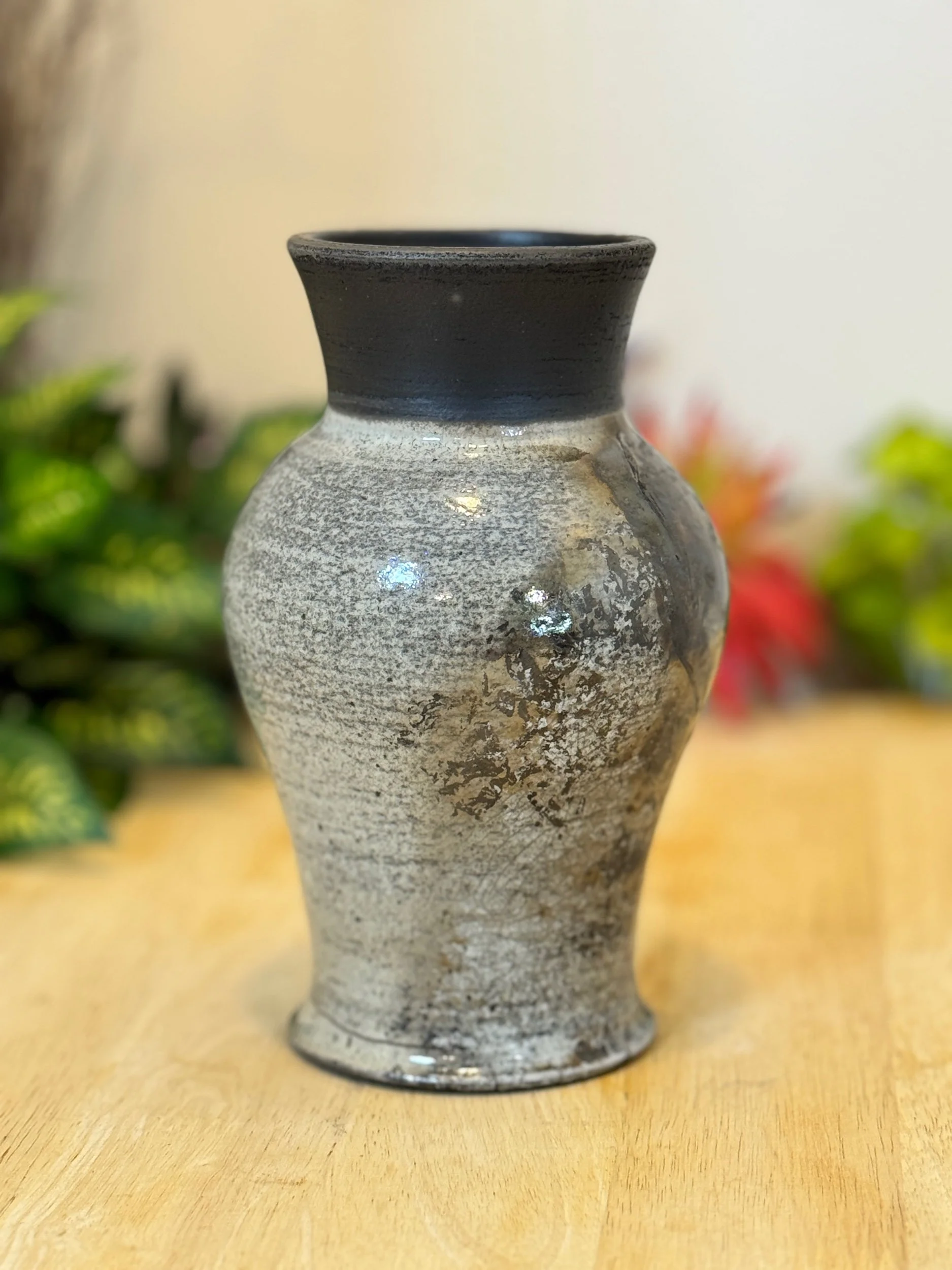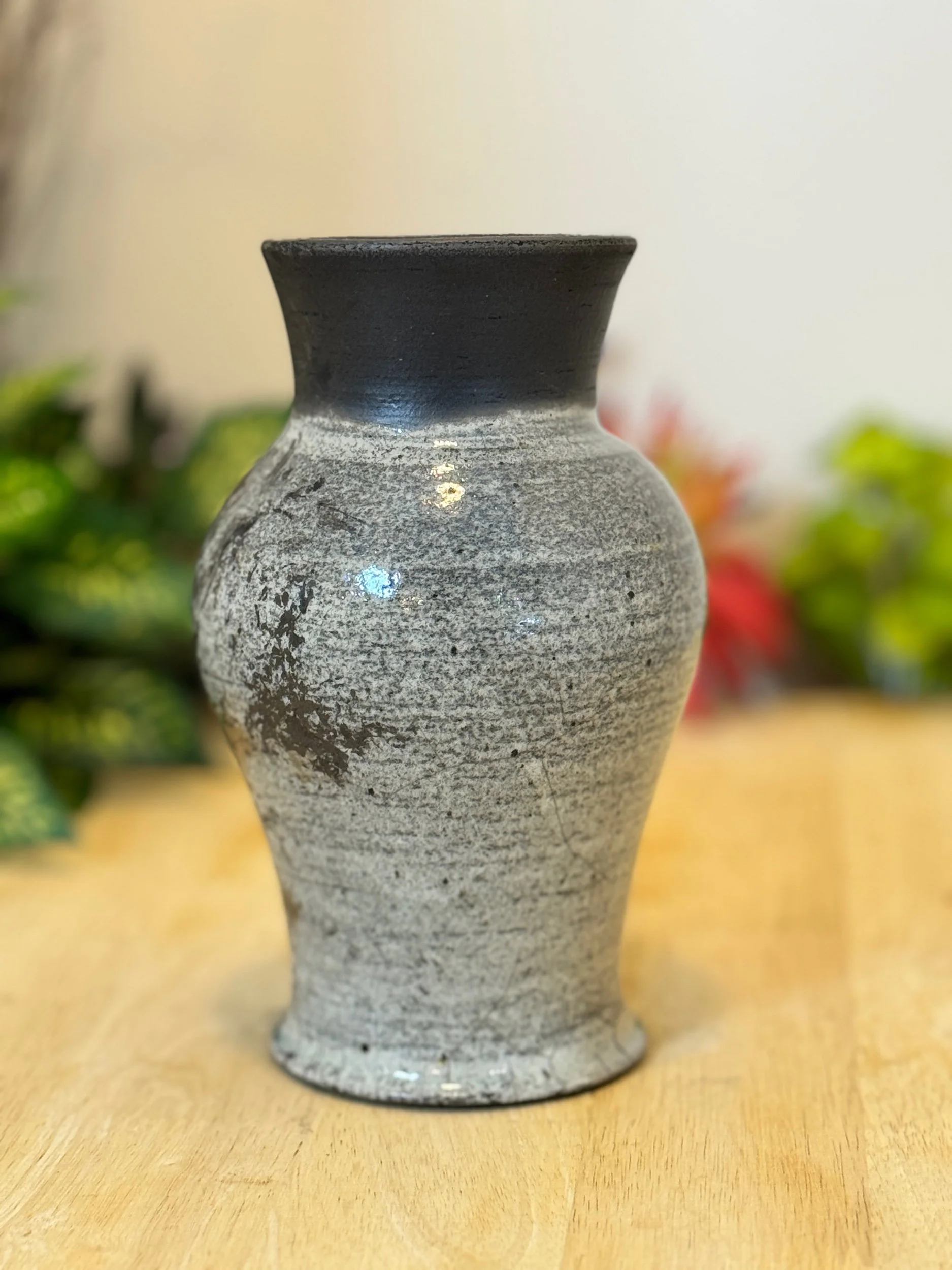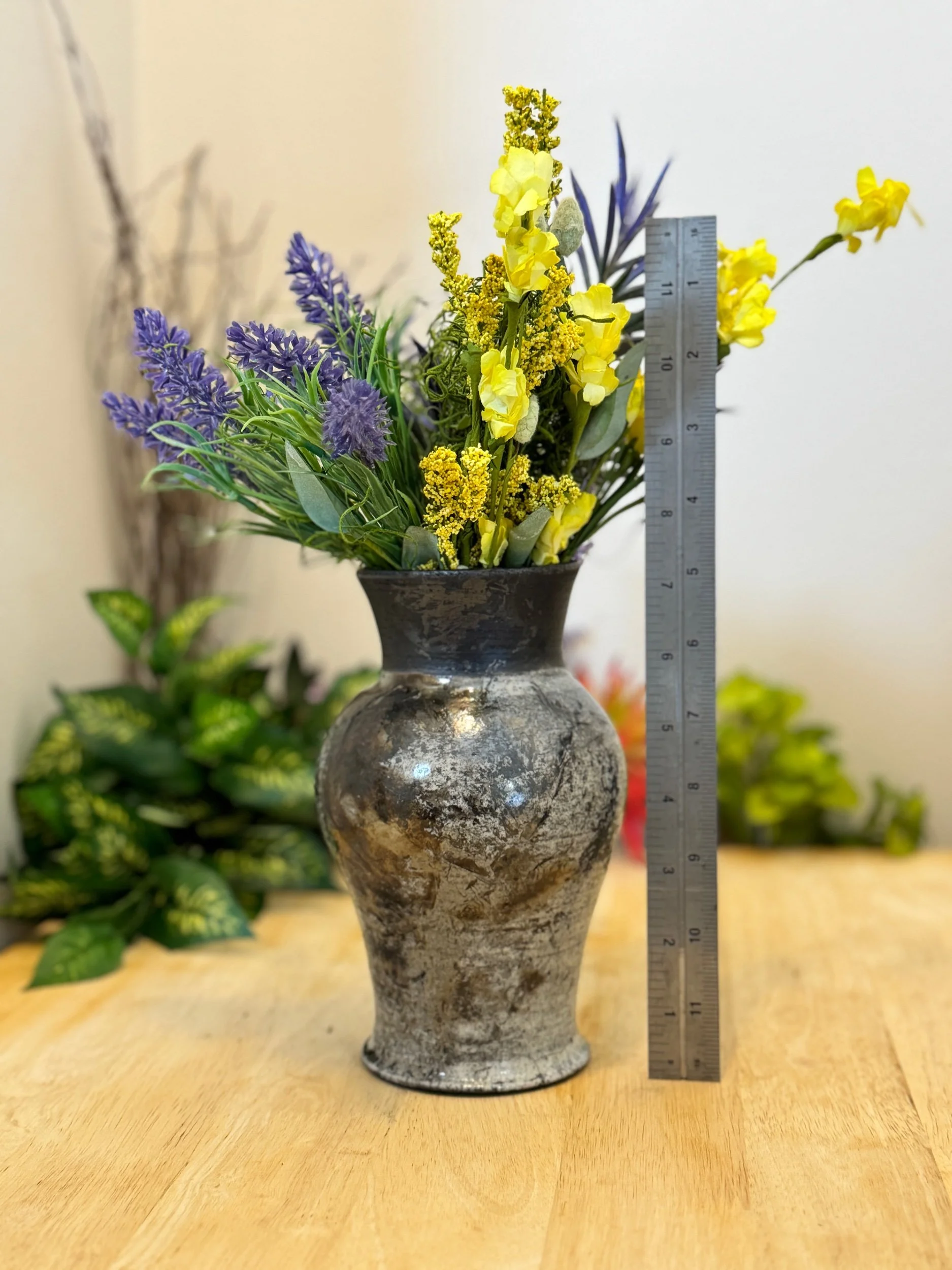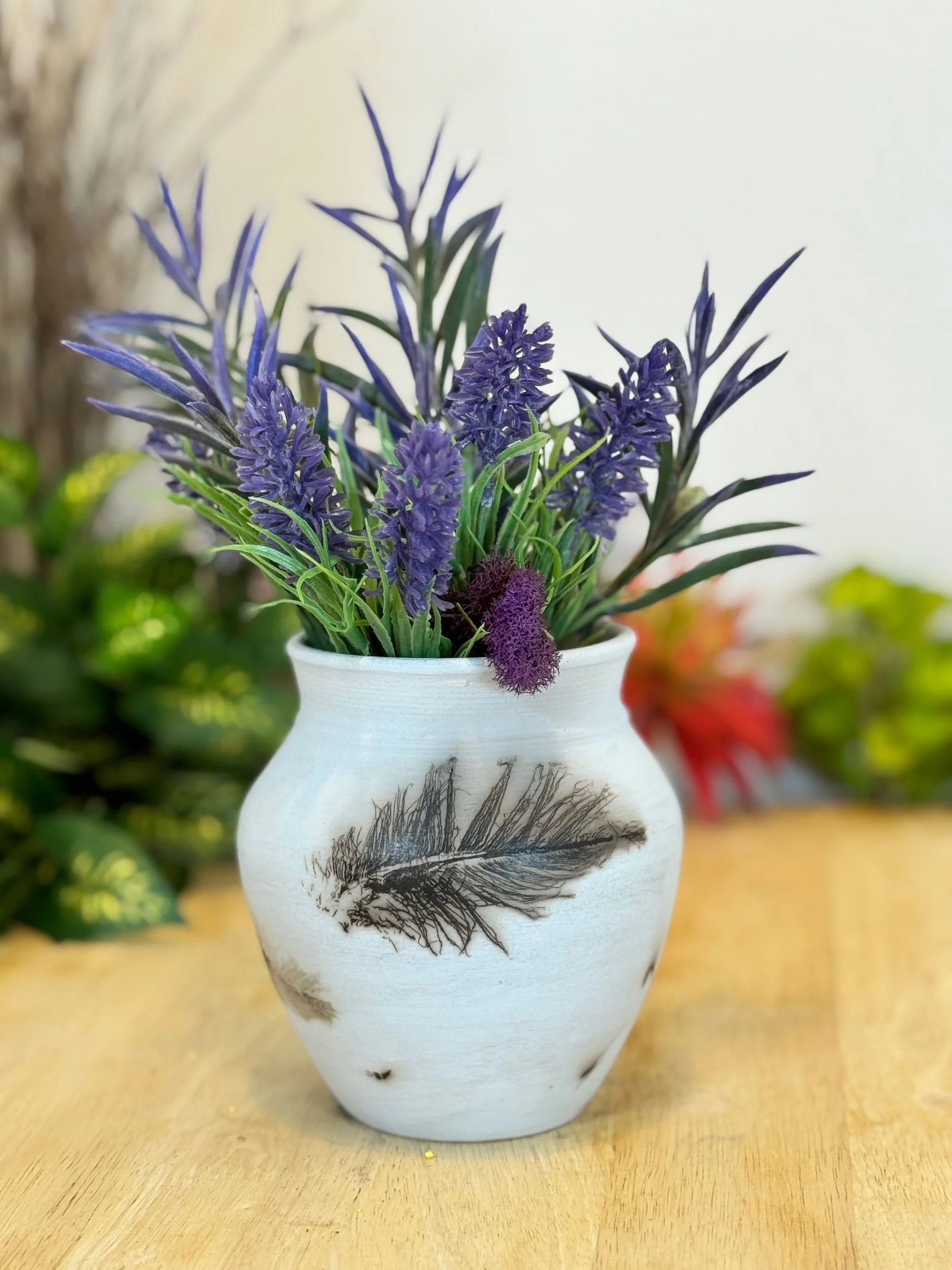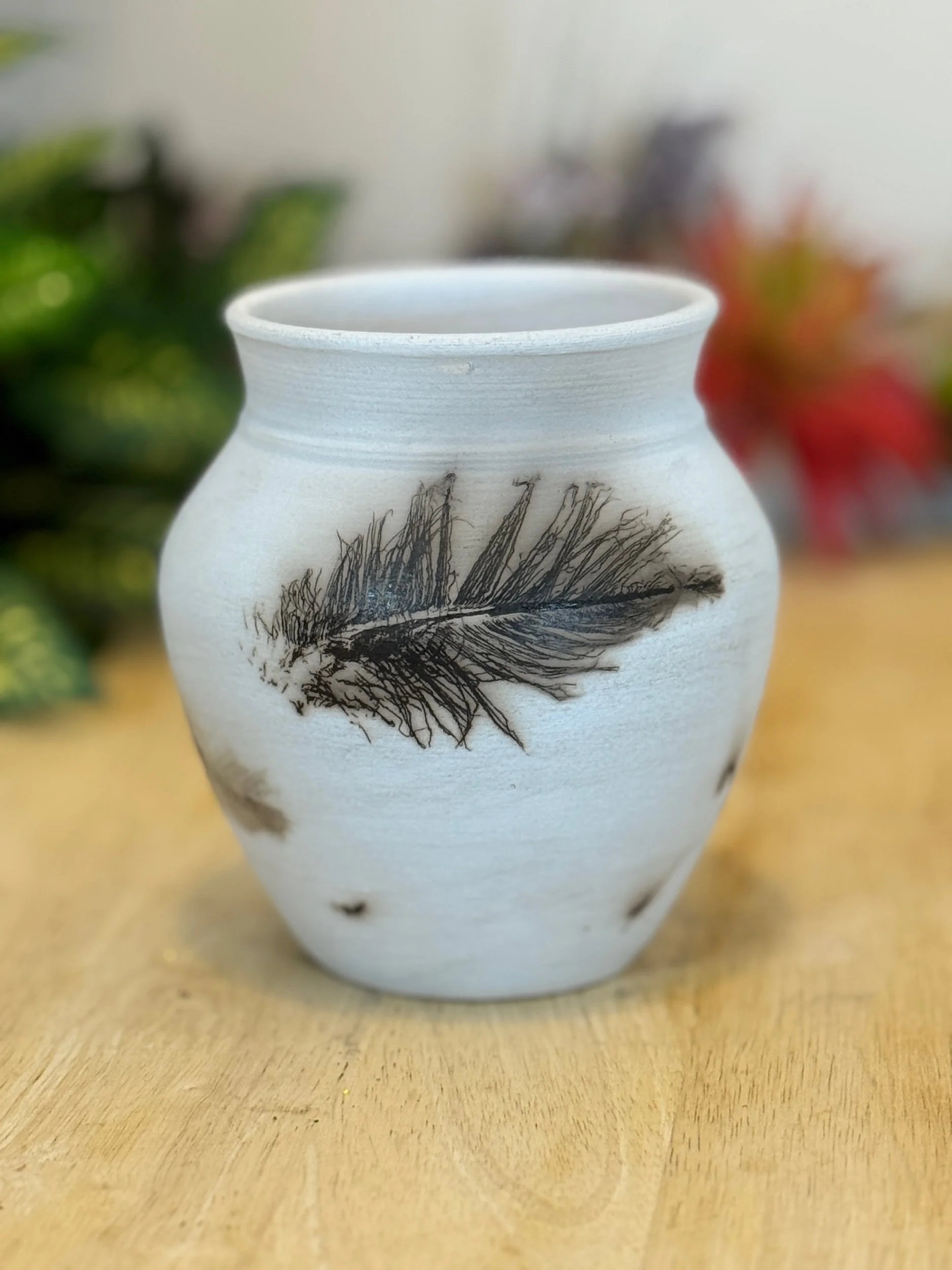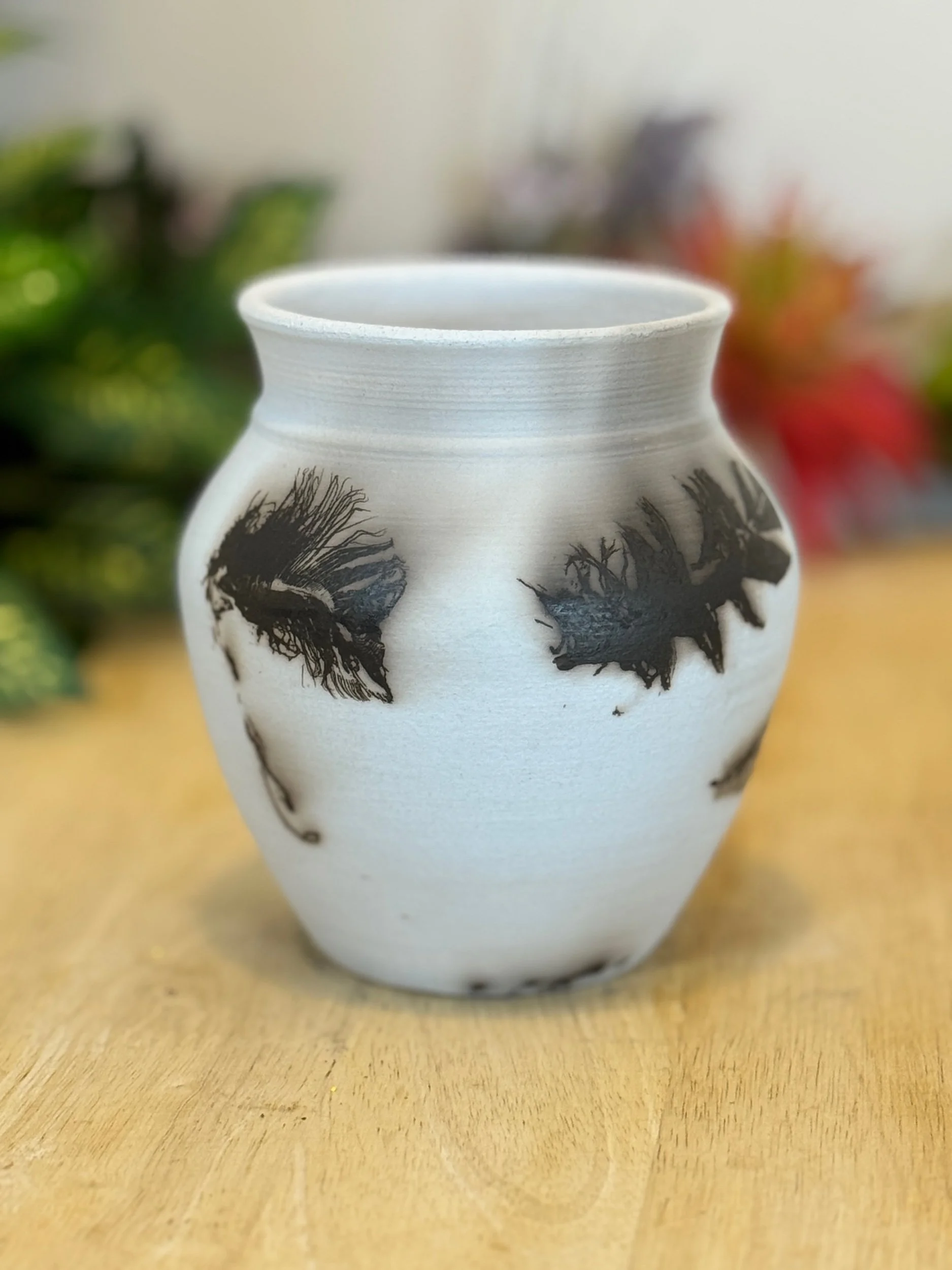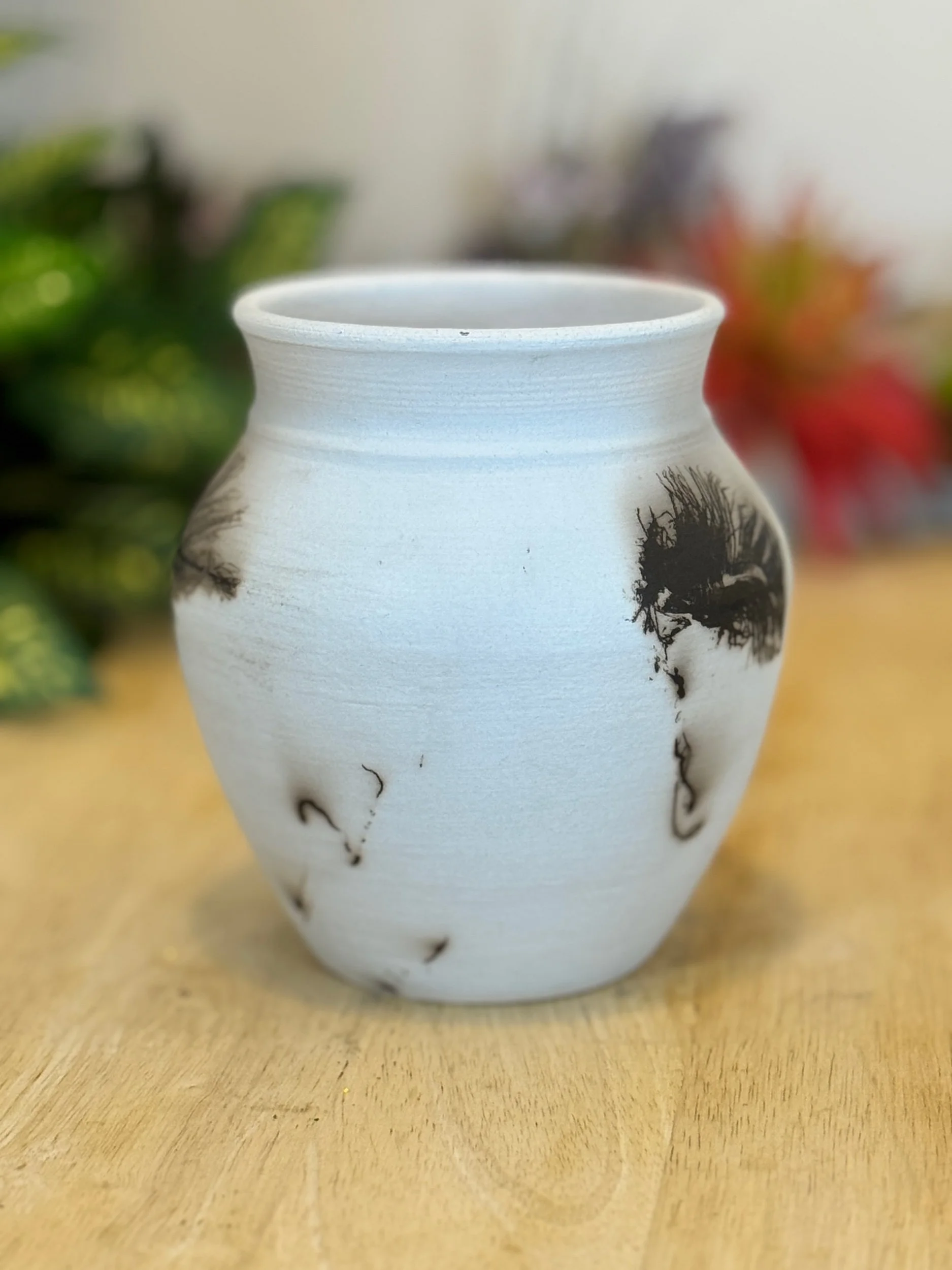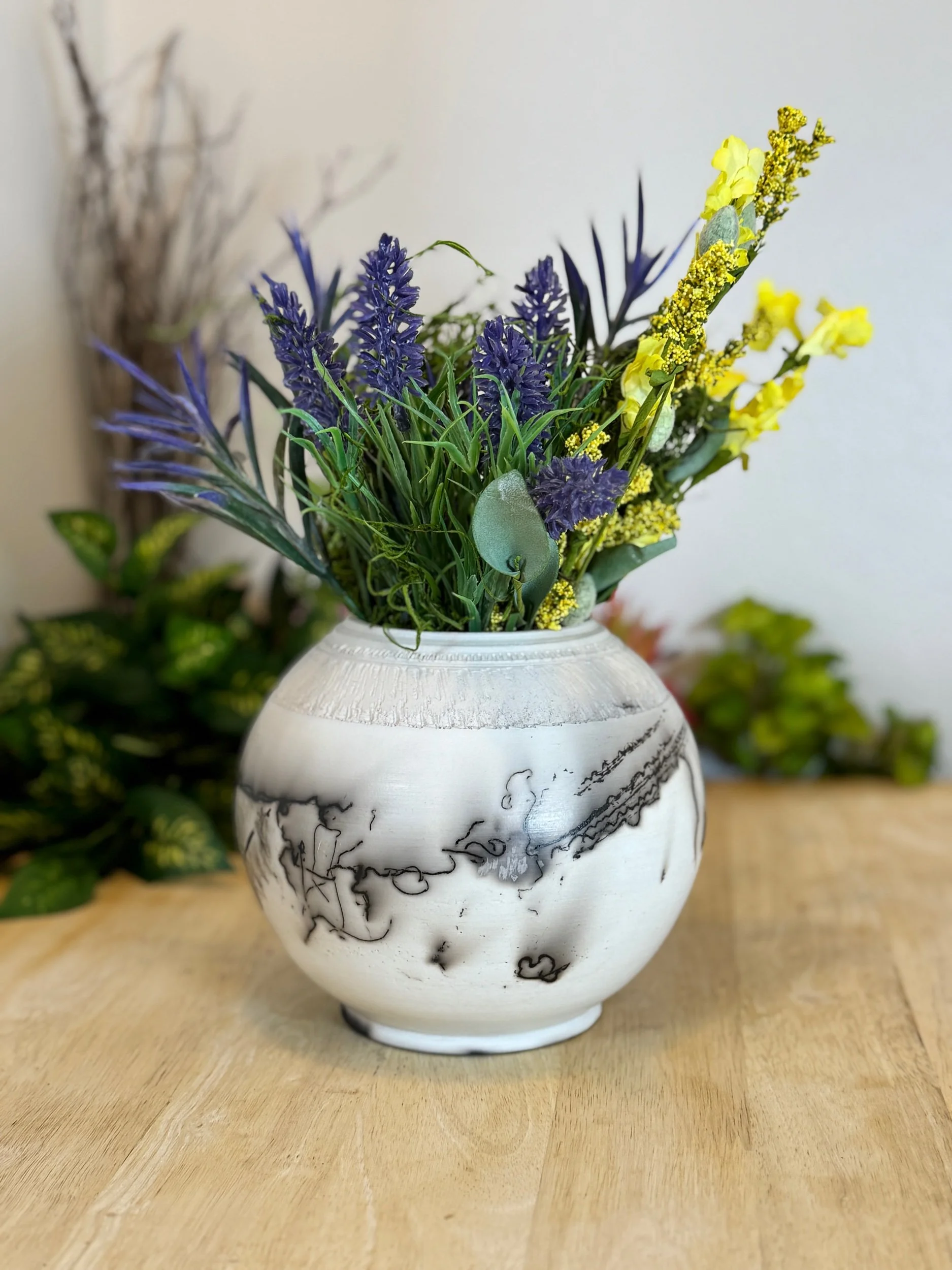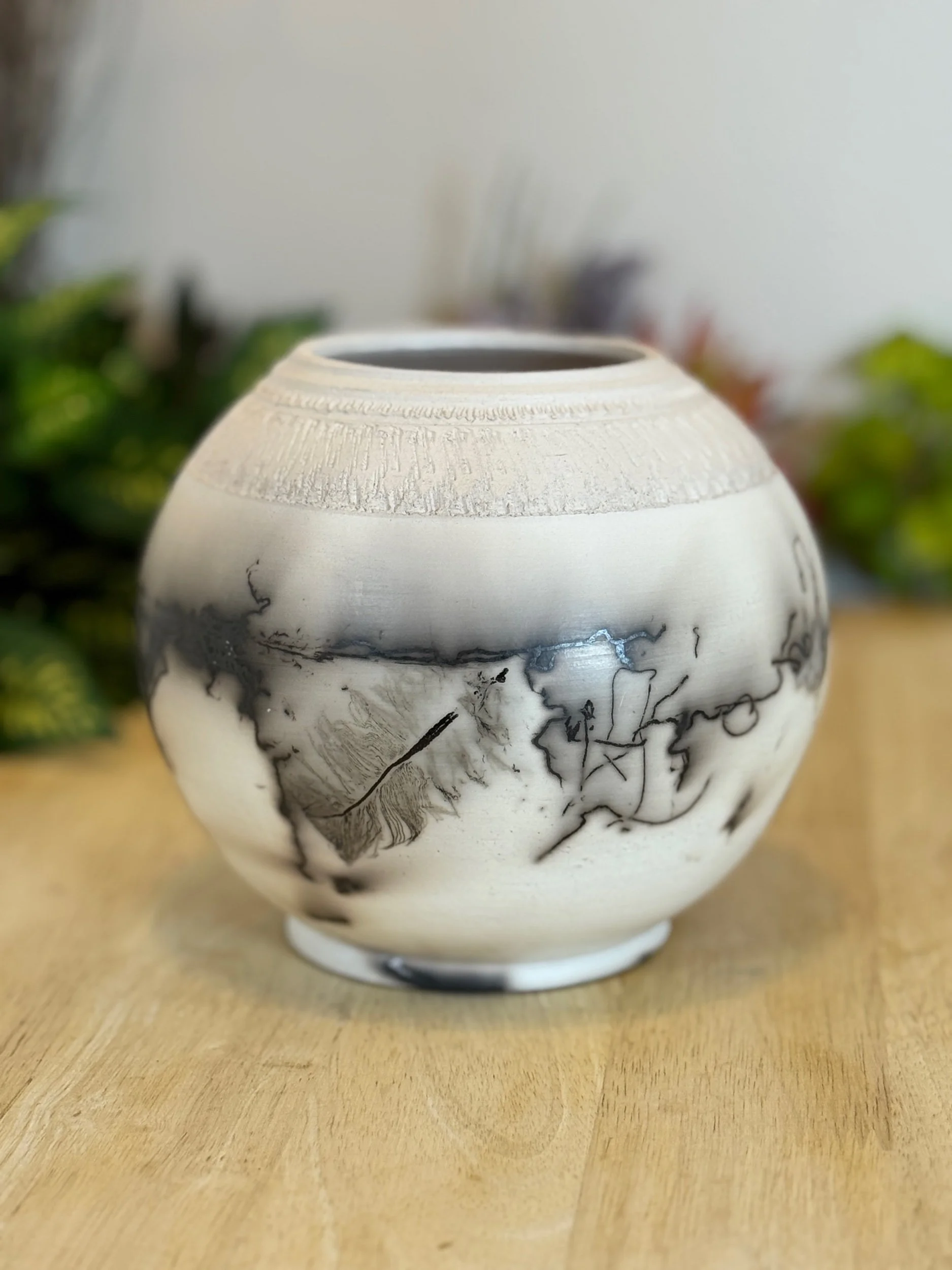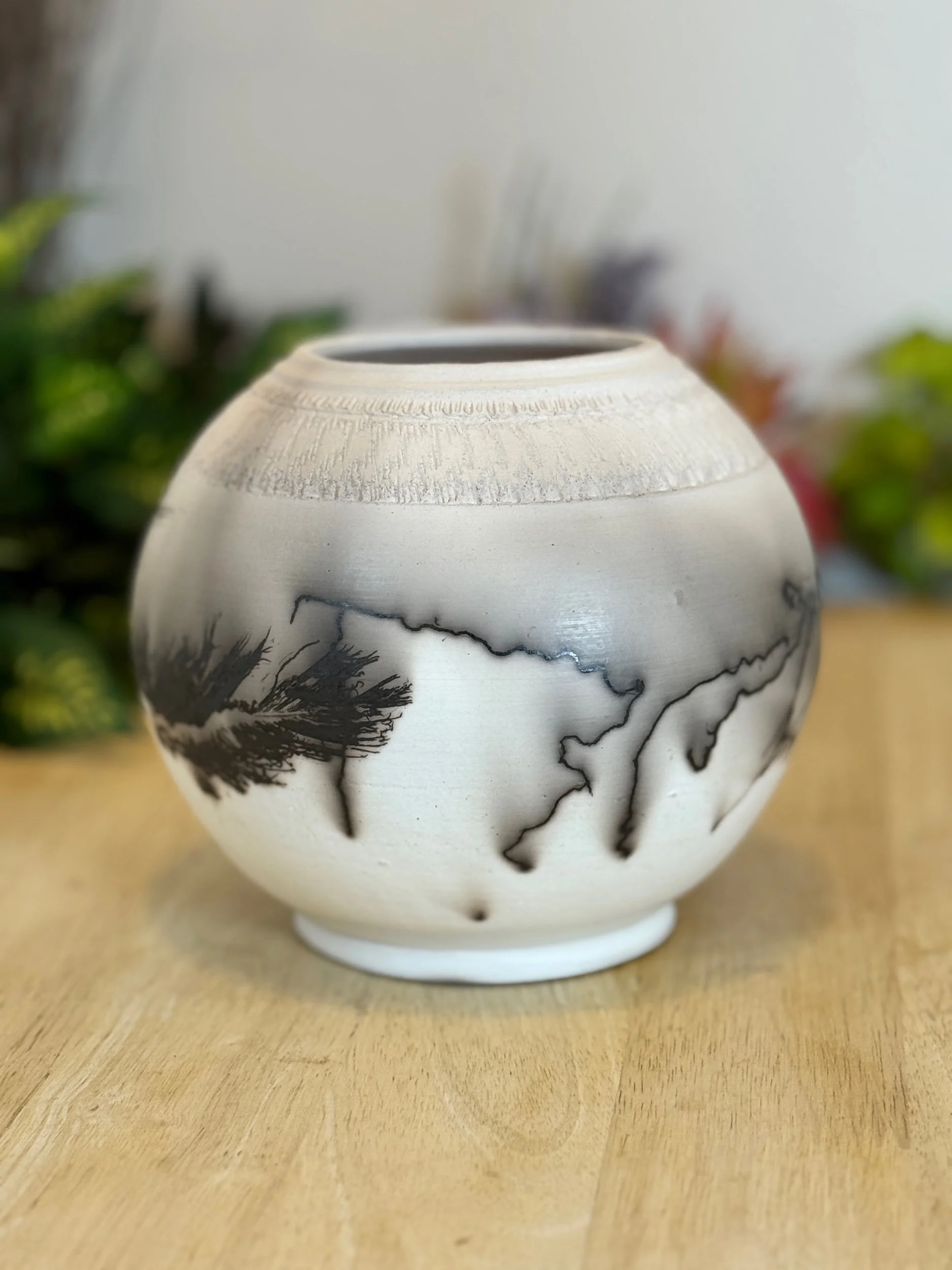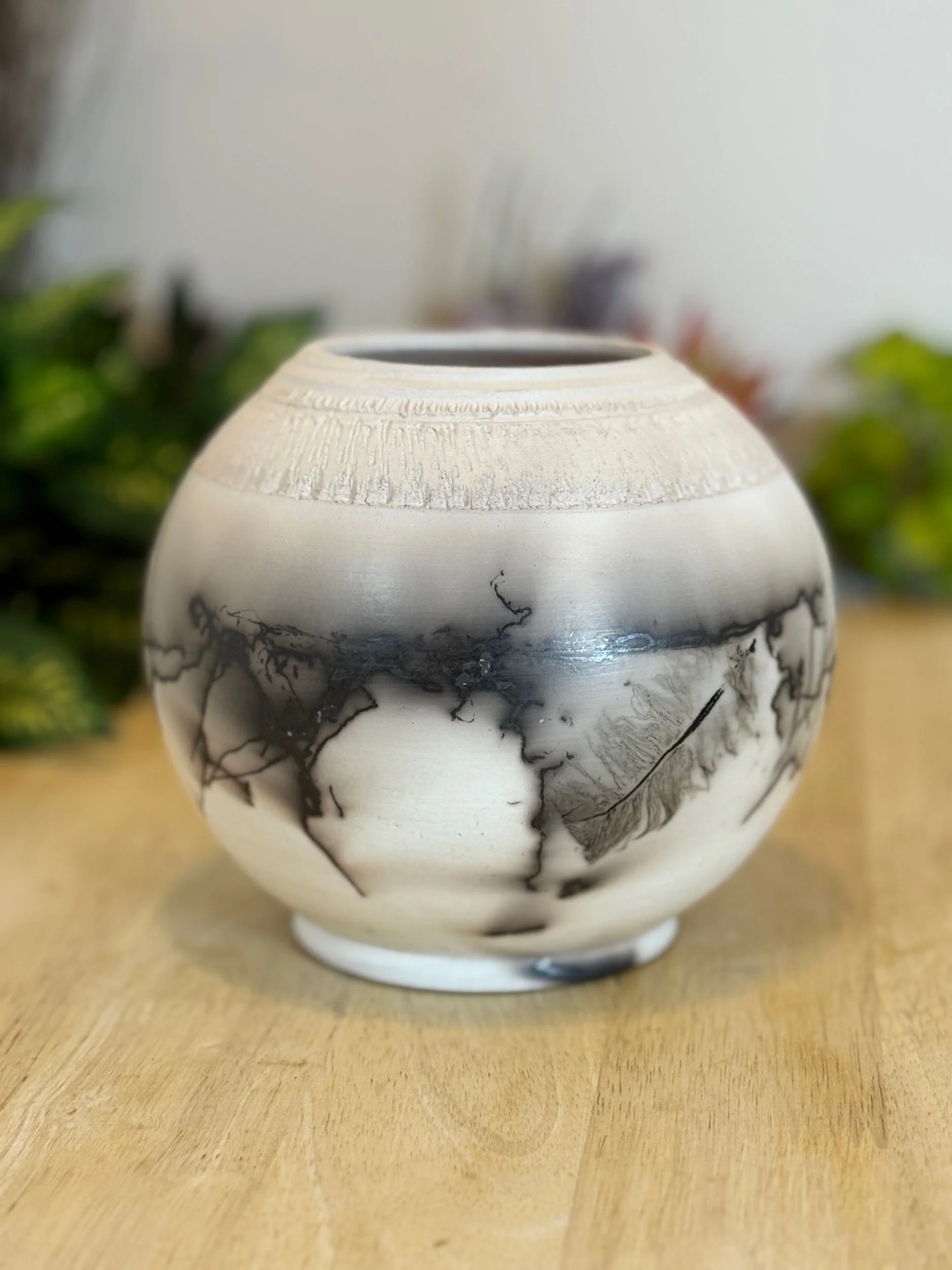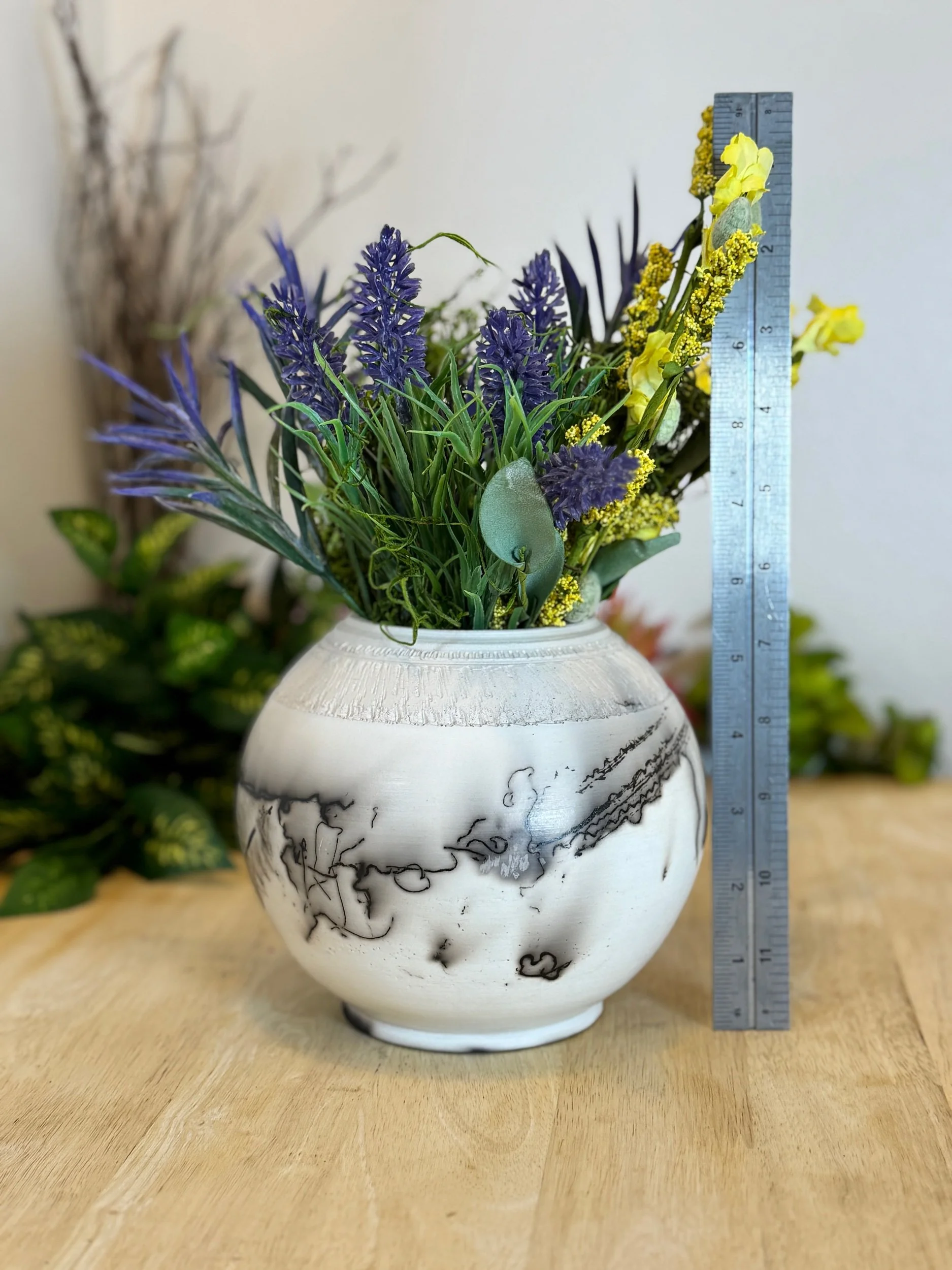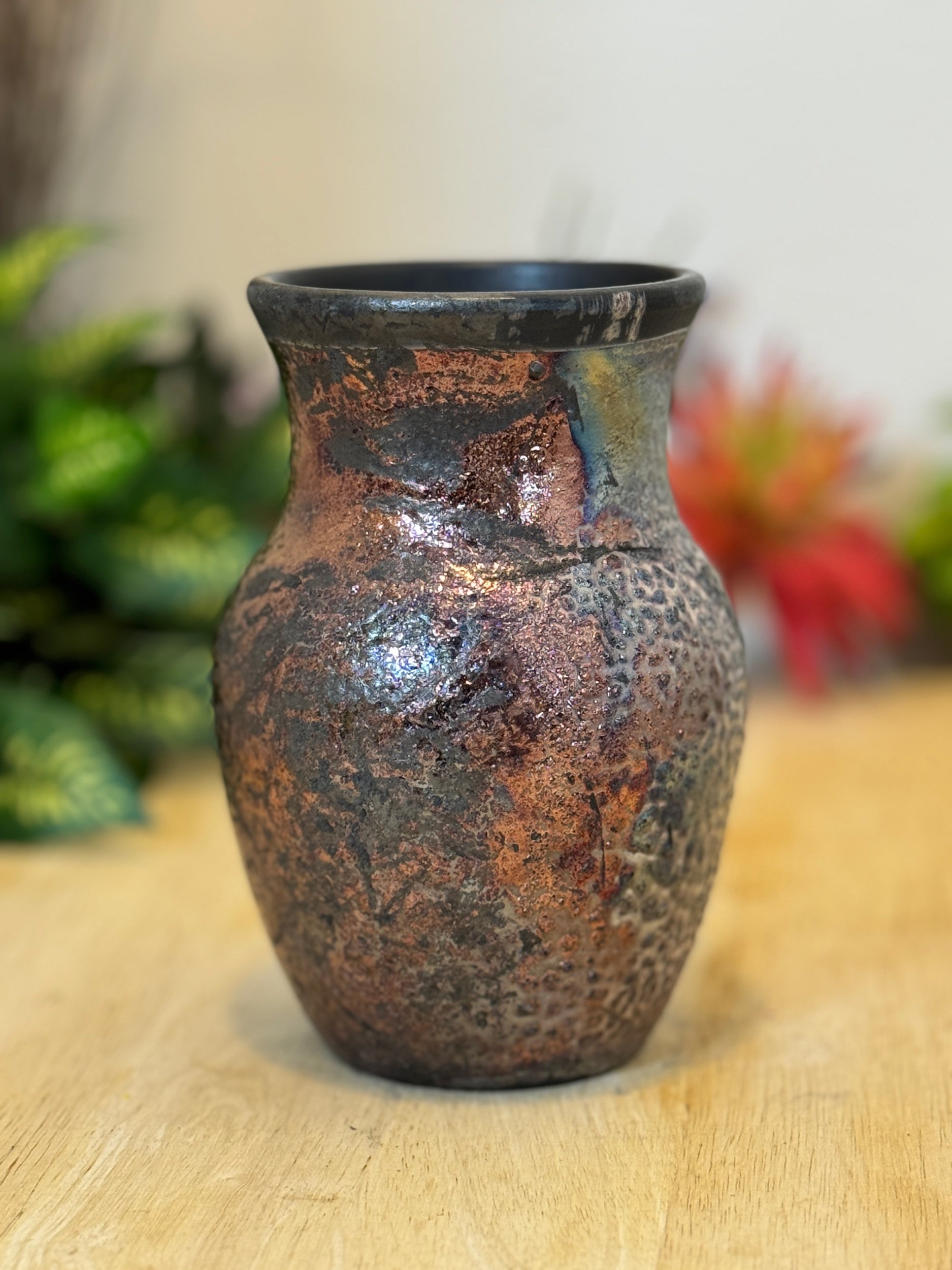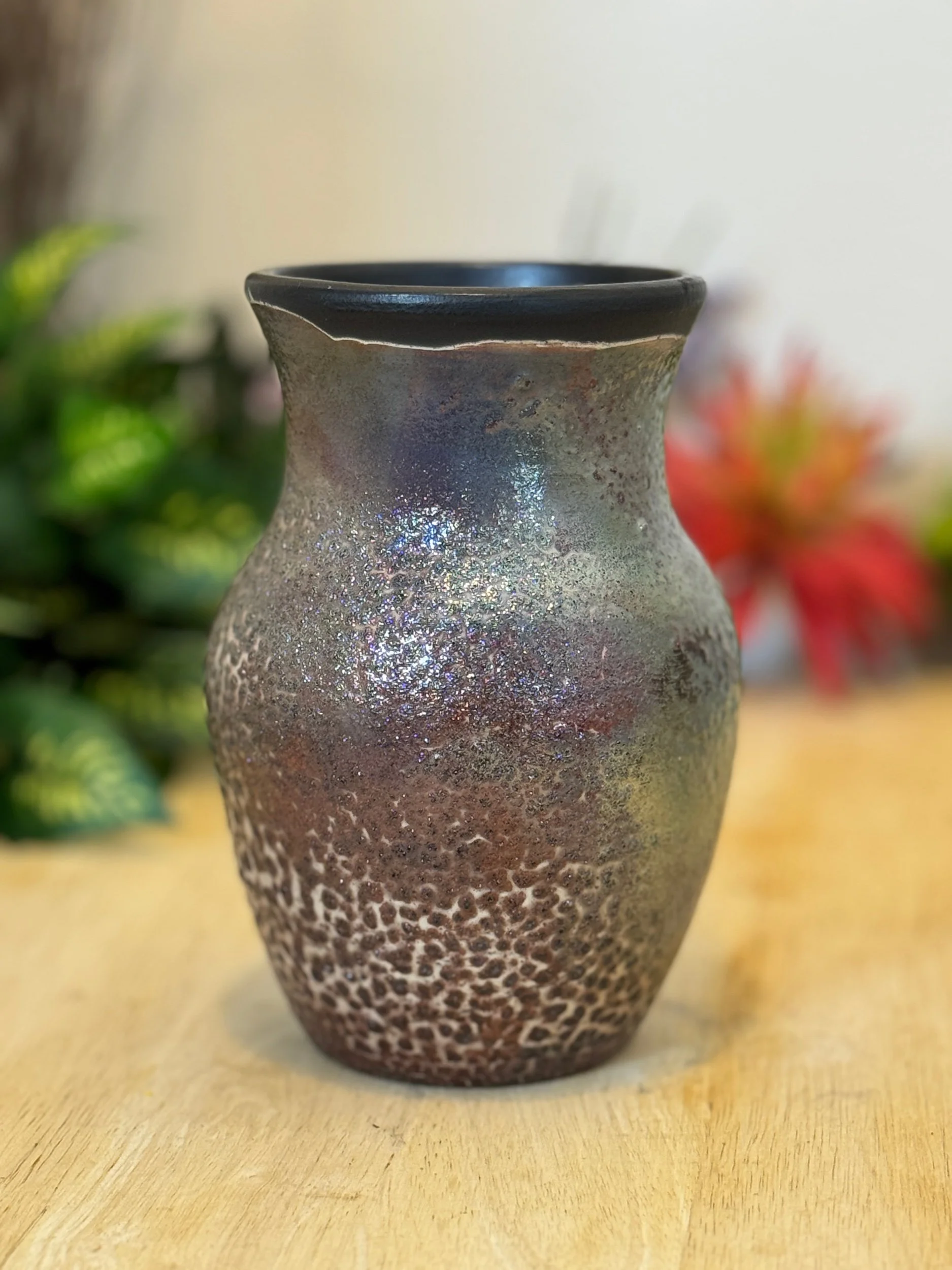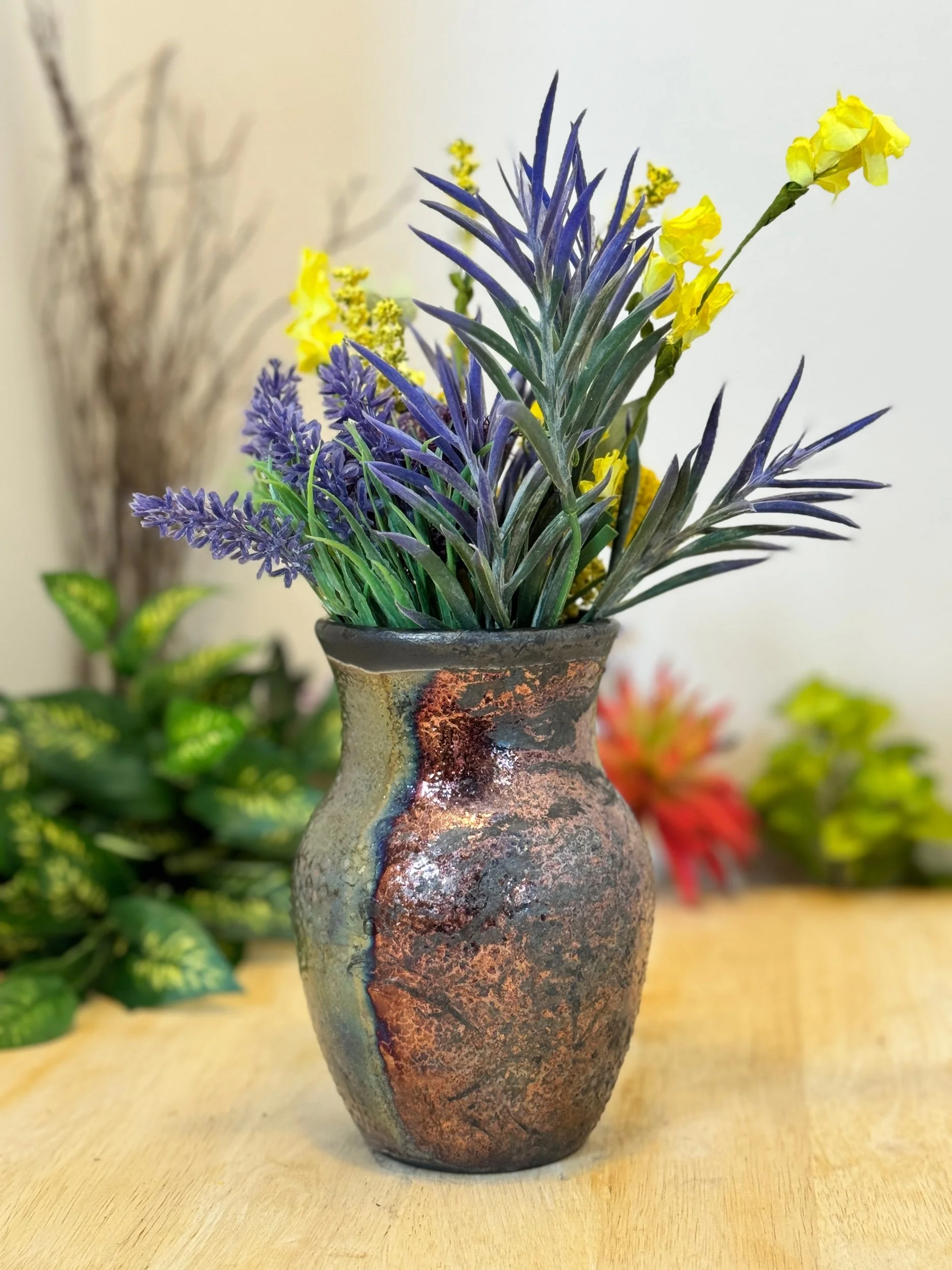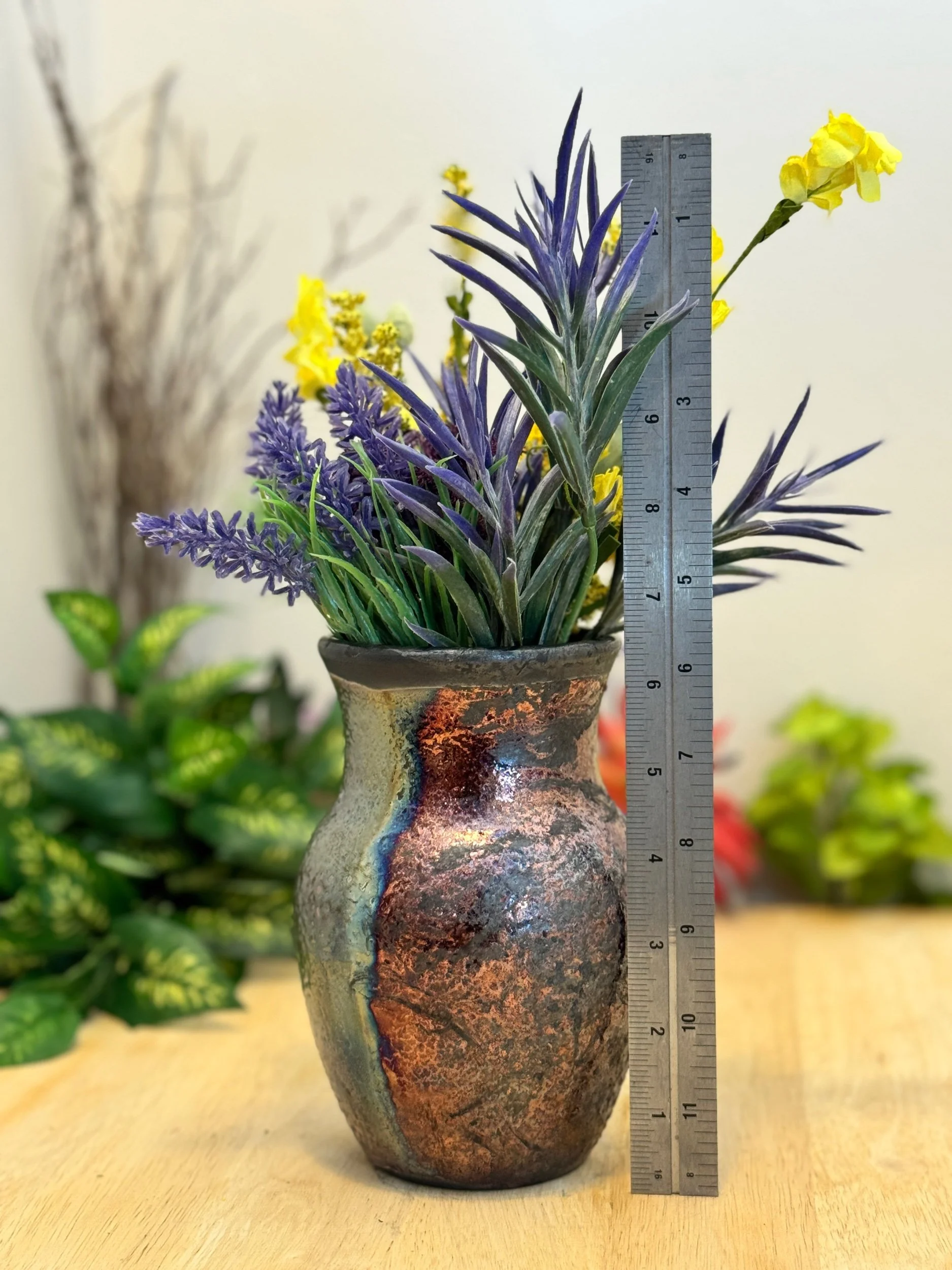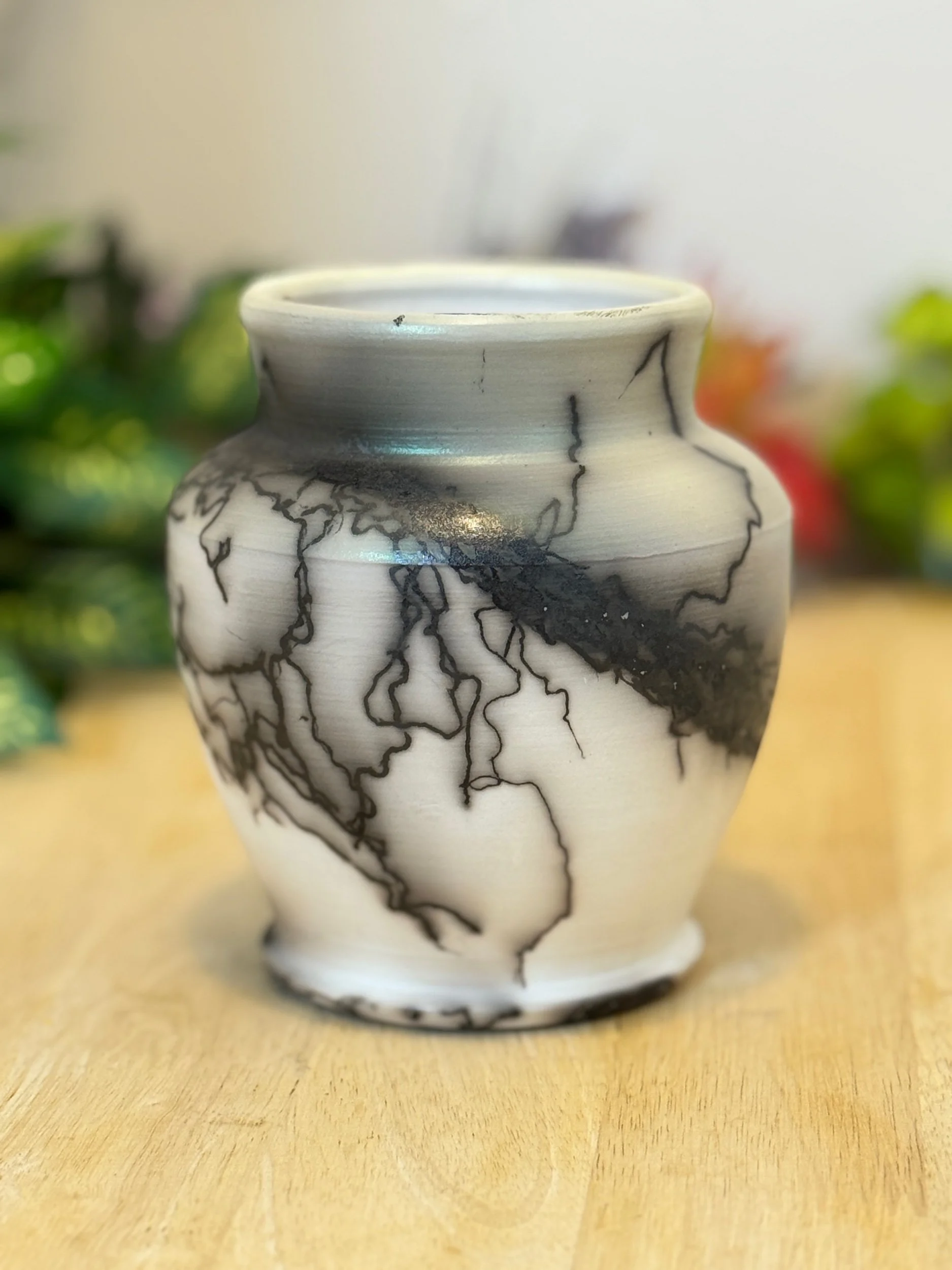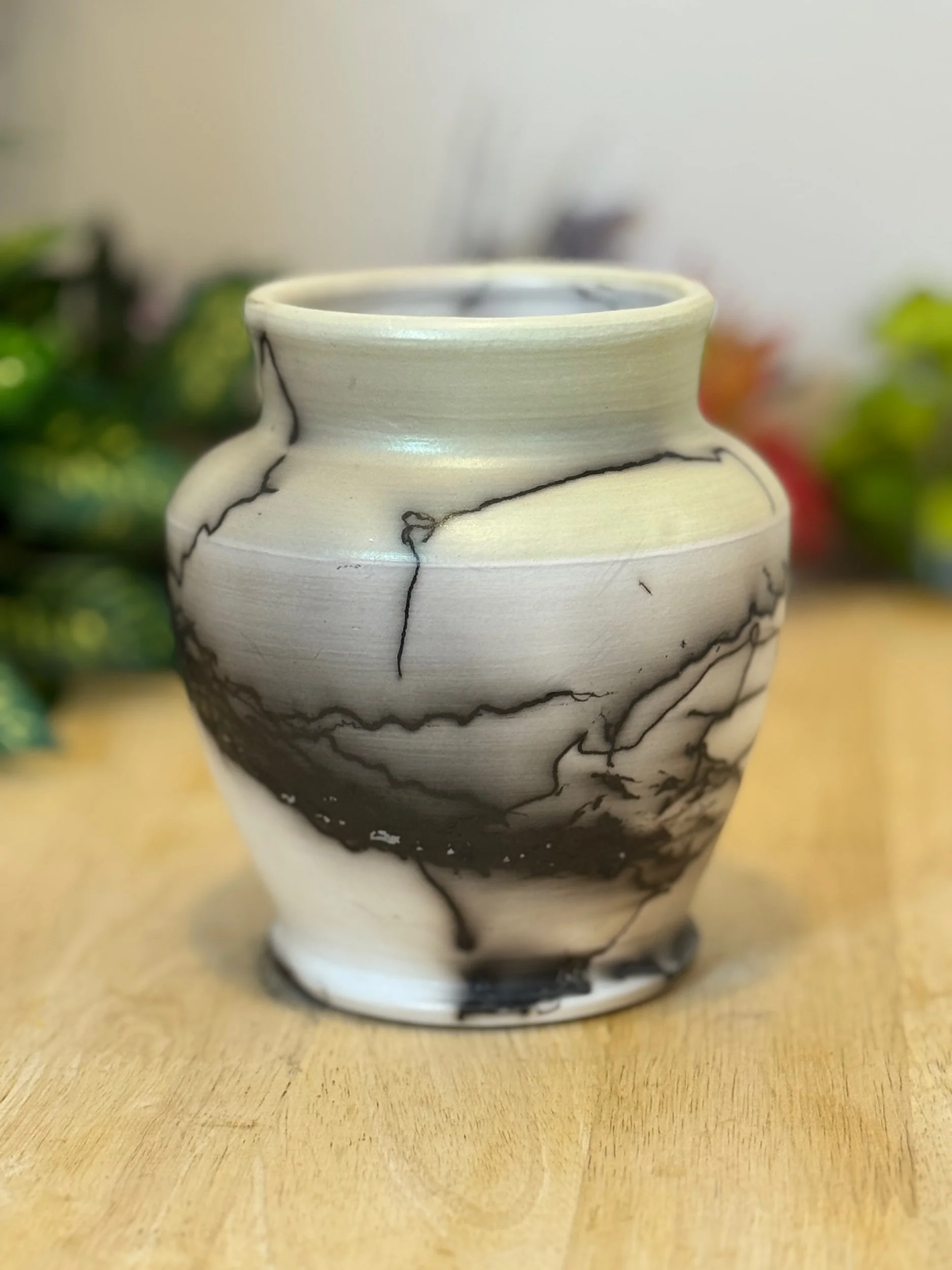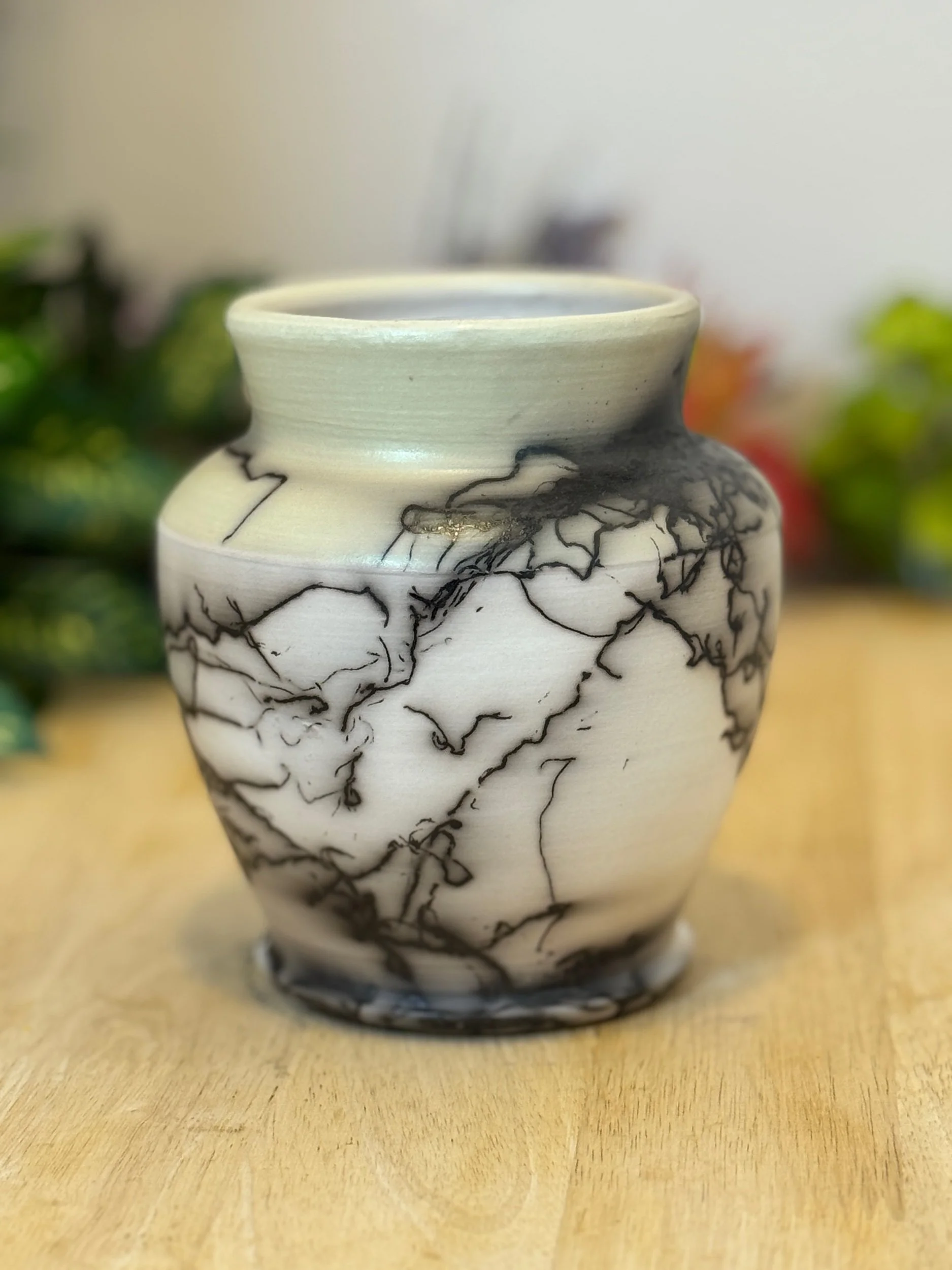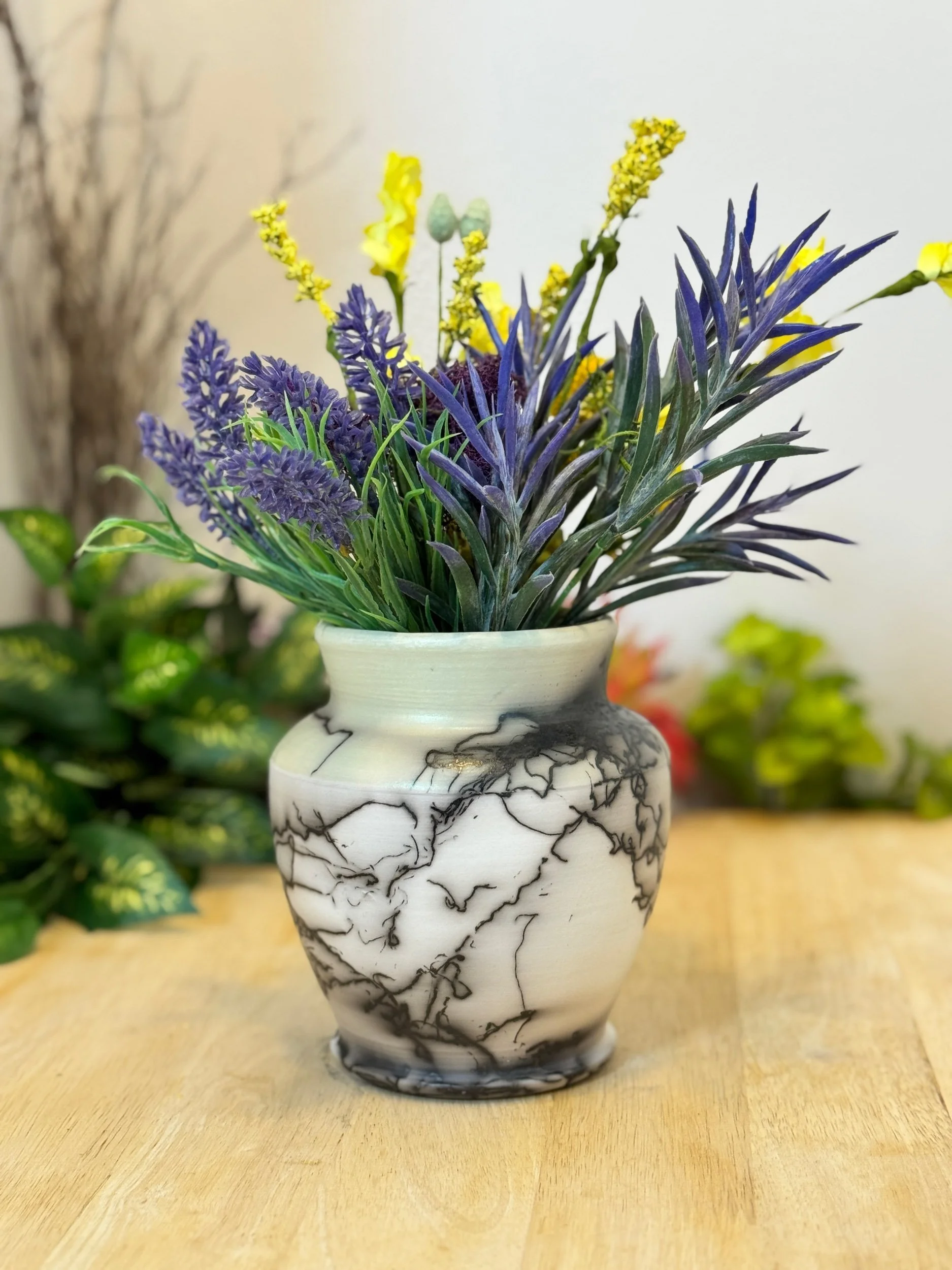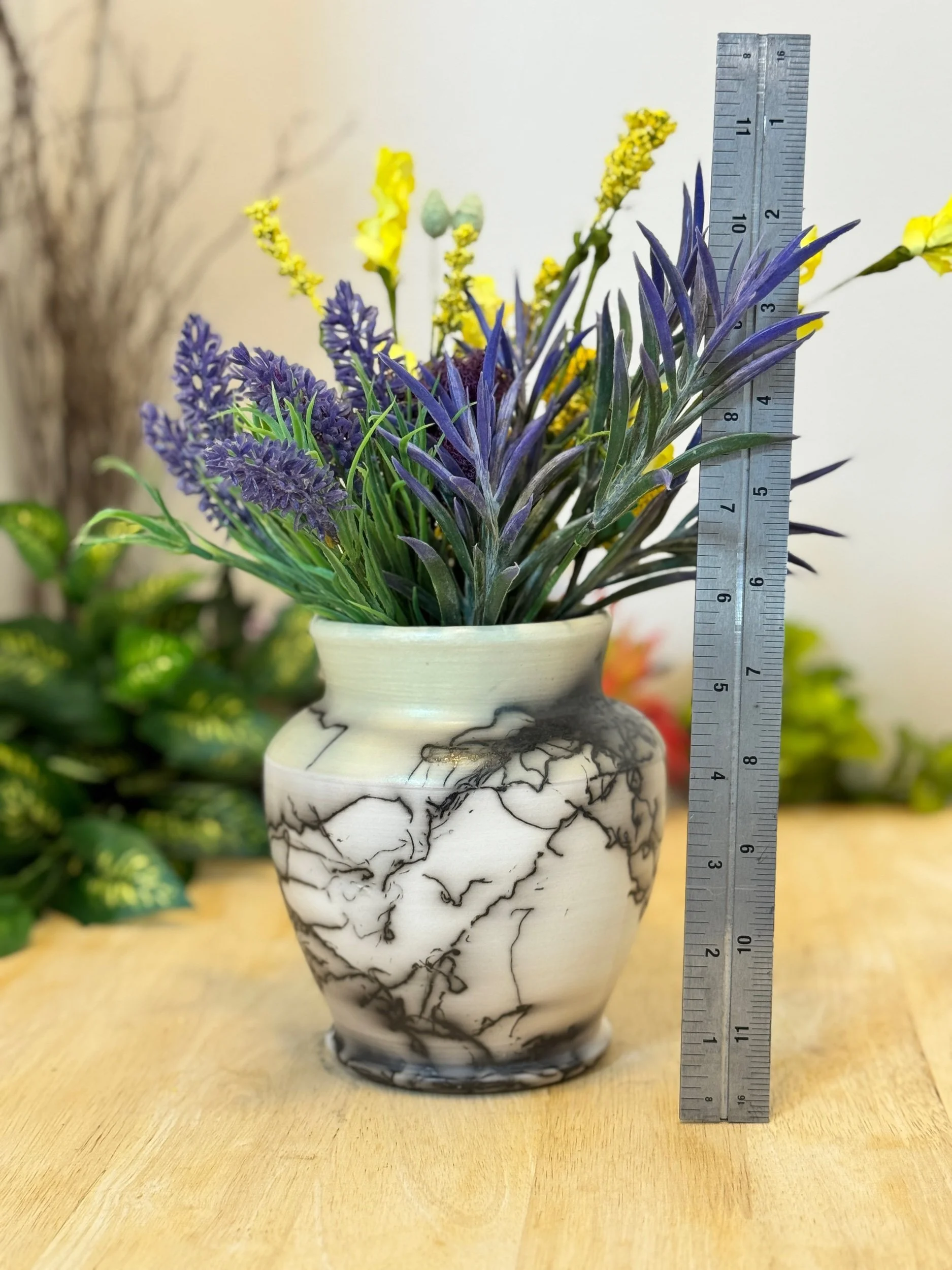The obvara firing technique is a lesser-known method of pottery firing that originated in Eastern Europe, particularly among Baltic cultures. It involves a unique post-firing process where, after the pottery is removed from the kiln at around 1,200°F to 1,400°F (650°C to 760°C), it is dipped into a fermented mixture of water, flour, yeast, and sometimes sugar or other organic materials. This mixture, known as obvara, creates a smoky, reductive environment as it reacts with the hot clay, producing distinctive carbonized patterns and a mottled, earthy finish on the surface.
The process begins with bisque-fired pottery, often unglazed or lightly glazed. After the initial kiln firing, the pieces are quickly submerged in the obvara solution, which ferments and generates heat and gases. This causes the mixture to adhere to the clay, leaving behind unique speckled or streaked markings as it cools. The pottery is then rinsed and polished to enhance its texture. The technique is unpredictable, resulting in one-of-a-kind pieces with a rustic, organic aesthetic, making it highly valued in artisanal and high-end markets.


